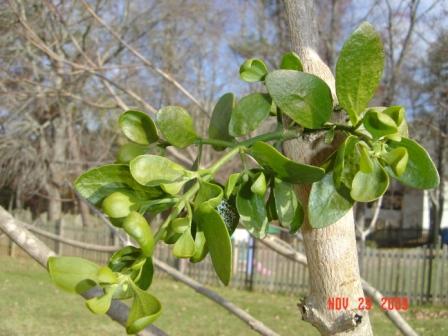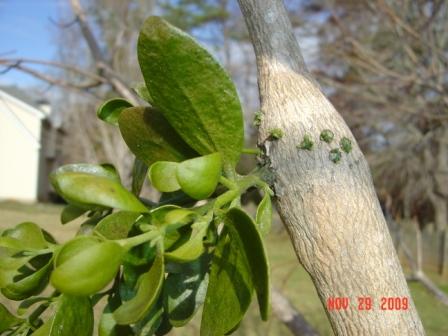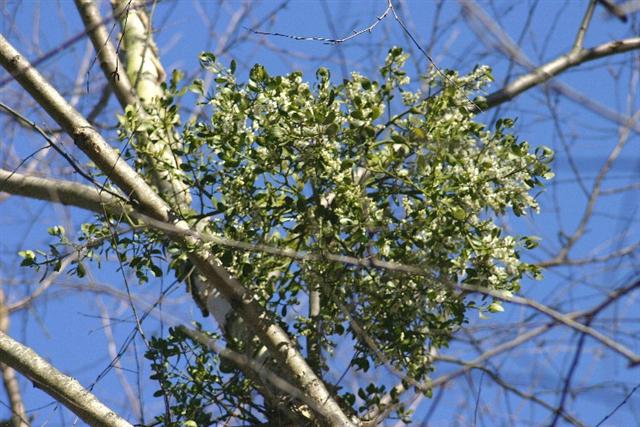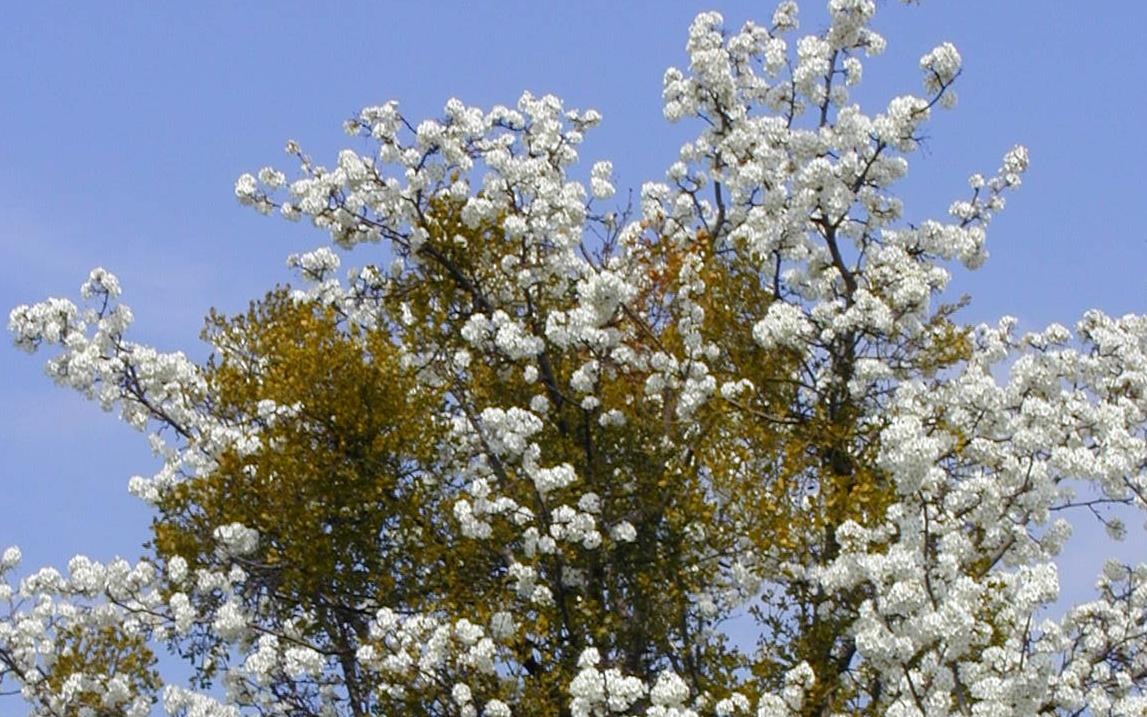Ask An Arborist: December 22, 2009
 |
 |
|
Images Submitted by Reader |
Lenny in West Cobb Writes...
"Please look at the attached pictures. What
is going on with my tree (maple I think)? All the leaves are off, but
there is this very green sprout sticking out with leaves that do not
match the tree. I have never seen anything like that before."
I posed this question to Art Morris, Board Certified Master Arborist with Bartlett Tree Experts.
His Answer Is...
Lenny has great holiday timing! The green "leaves" in this picture are
actually mistletoe. This common holiday decoration is a year-round
semi-parasite of trees, and it becomes more evident during the winter
months when the leaves drop. Mistletoe is known to attack more than
one hundred different tree species and is commonly found in oaks and maples.
Drought-stressed trees or those suffering from root damage and disease
are the most prone to infection. Mistletoe "confuses" the tree by
pretending to be a branch, with root-like structures (haustoria)
growing inside tree twigs, limbs and trunks. It causes damage to the
tree by robbing it of nutrients and water; it's possible for mistletoe
to spread throughout a tree canopy within a few years. Curiously, mistletoe does retain some
independent plant characteristics by performing its own photosynthesis (with nutrients
stolen from the host tree).

|

|
|
Mistletoe in River Birch
|
Mistletoe in Bradford Pear
|
It is important to try to remove mistletoe in trees. The easiest way
to do this is to prune off the affected branch. Prune back to a
lateral branch at least 12" behind the mistletoe. In some cases, a
plant growth regulator (such as Florel®) can be applied to the mistletoe to kill it
without harming the tree. For large trees it may be necessary to hire
an arborist to climb and remove mistletoe. Mistletoe is spread by
birds which eat the white berries commonly seen during the Holidays, and it will come back if the tree's health is not improved.
Make sure to decompact soil, provide mulch, test soil nutrient levels,
and provide sufficient water to trees affected by mistletoe. (In the
case of Lenny's tree I would also recommend examining the root collar
to be sure it's not buried under excessive soil or mulch.)
My thanks go to Art Morris of
Bartlett Tree Experts for answering this question.
For More Information
Dr. Kim Coder with the University of Georgia has
published a great, informative paper on
mistletoe and its effects on trees (pdf).
If you are concerned about the trees in your landscape, you can contact a Certified Arborist or a professional tree company in
your area through the web site of the
Georgia Arborist Association.
If you have comments or questions about this article or want to submit a question that may be used in a future article, please
email me.
Unless otherwise noted, Images & Drawings Copyrighted © 2009 by Theresa Schrum - All rights reserved





